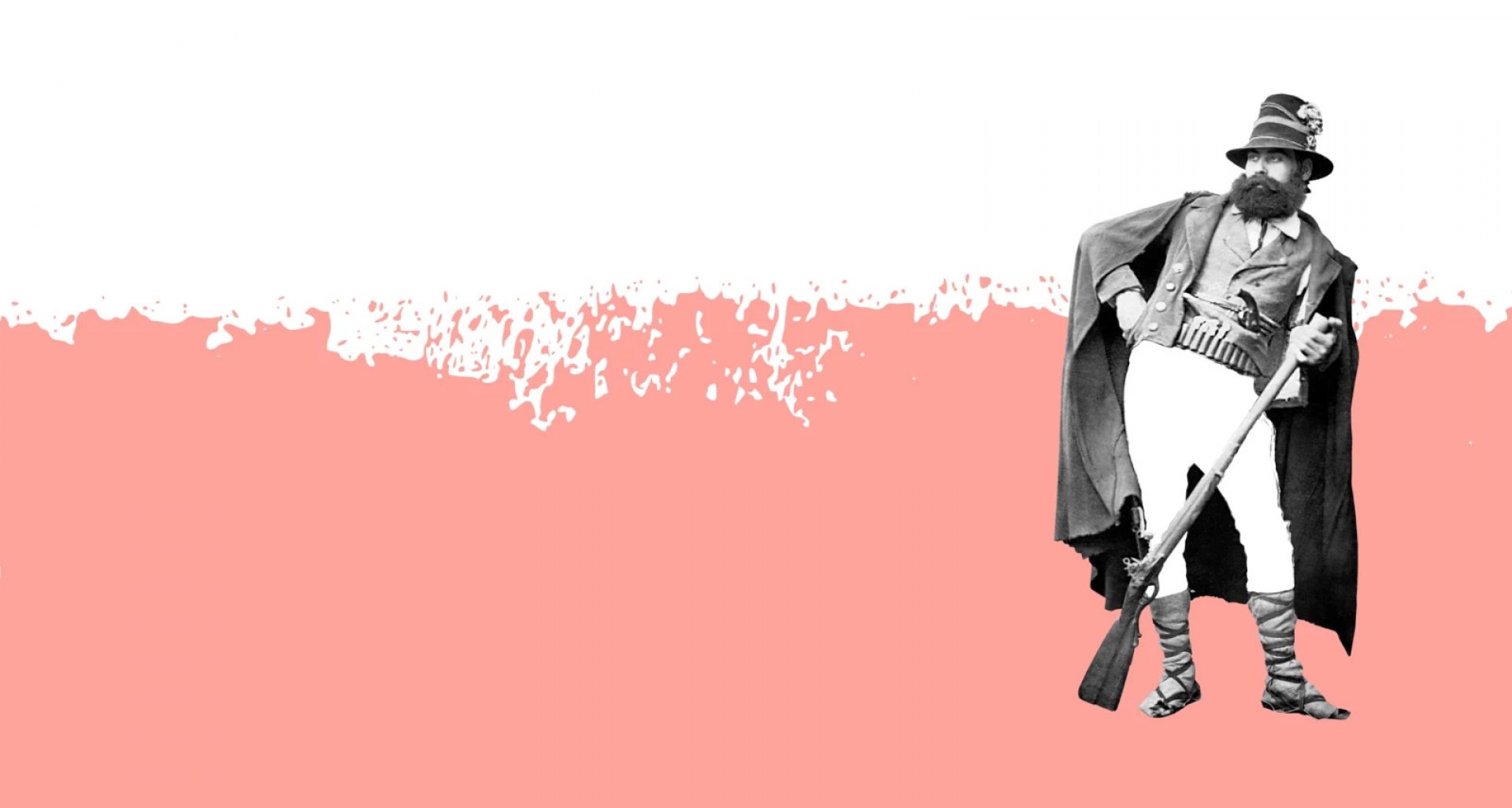Les Brigands
Mo | Tu | We | Th | Fr | Sa | Su |
Synopsis
Act 1
A wild rocky place
The brigands assemble at dawn, but some of them complain to Falsacappa that they cannot live properly on the rewards of their work. He promises an imminent and profitable venture. The marriage of the Princess of Grenade with the Duc de Mantoue has been announced, and the band will be there.
His daughter Fiorella has fallen for the young farmer Fragoletto, whose farm the gang recently raided, and she is beginning to have doubts about their calling. She shows Piétro, the second-in-command a small portrait she has had painted of herself. Fragoletto is brought in by some of the brigands, not unwillingly, as he asks for Fiorella's hand, and to join the band. Falsacappa agrees on condition that Fragoletto prove himself.
Fiorella is left with Piétro, and a handsome stranger enters. He – fascinated by her – has lost his way. When Piétro goes to find help, she decides to warn him – in fact the Duke of Mantua – to flee. Fragoletto arrives with an intercepted message about the union of the Duke and the Princess of Granada, setting out the promise to the Spaniards of a large dowry instead of the debt owed to them. Falsacappa frees the messenger, replacing the princess's portrait in the briefcase with that of his daughter. Fragoletto has earned his place in the band; as the gang celebrate their new member they hear the sound of the boots of the carabinieri approaching, but they pass by without noticing the gang, and the brigands resume their celebration of their plans.
Act 2
An inn on the frontier
The Mantuan delegation is heading for Pipo's inn on the border of Italy and Spain on the road from Granada to Mantua. Posing as beggars the bandits come to the inn; they quickly overwhelm the hotel staff horrified to be victims of the infamous Falsacappa.
The band plan to disguise themselves as cooks and waiters; then, when the Mantuans arrive, they will capture them in turn and re-disguise themselves as Mantuans, so that when the Granadans arrive they will surprise them, don their clothes and hasten to the Mantuan court to present Fiorella as the princess whose associate (Pietro in disguise) is worth three millions. Fiorella claims her reward: Fragolettos's hand and the disguising begins.
When the Mantuan party arrive, led by the Baron de Campotasso and accompanied by the carabinieri they fall into the trap, but the brigands have little time to switch clothes again before the Granadan delegation reaches the inn. After a Spanish dance, the Granadans are greeted by Falsacappa as the captain of the carabinieri and Piétro as the Baron de Campotasso. Gloria-Cassis asks about the three million payment but then Fragoletto and Fiorella (as the innkeeper and his lover) enter. The Granadans become confused when told to retire to bed (at two in the afternoon) but do as they are told. Once out of their clothes, the brigands go for them for the next disguise. However the innkeeper escapes his bonds and cries for help, but the brigands prevail over the carabinieri who, locked in the cellars, have helped themselves to the wine. The brigands head off towards Mantua.
Act 3
A great hall at the court of Mantua
The Duke is taking advantage of his last hours before marriage bidding farewell to his mistresses. The portrait he has received of his bride reminds him of the peasant girl who assisted him in the mountains (and for whom he has been searching ever since). The Duke is also keen to pay off his debt of three million little knowing that his treasurer Antonio has been spending the ducal money on women of his own.
When the fake Granadan delegation arrives led by Falsacappa, the Duke is delighted to see Fiorella again, and she recognizes him as the stranger lost in the mountains. Fiorella, playing the princess of Grenade introduces Fragoletto as her page.
When Falsacappa asks for the money it emerges that the treasurer has squandered the dowry. Falsacappa is furious, but just then the Mantuans, swiftly followed by the Granadans abandoned at the inn, arrive, along with the carabineri. The real princess introduces herself. The brigands admit who they are but when Fiorella enters in her costume from Act 1 and reminds the Duke that she saved him from the brigands, he agrees to an amnesty and they swear to lead good lives from then on.
Program and cast
Opéra-bouffe in three acts (1869)
Creative team
Jacques Offenbach - Music
Henri Meilhac - Libretto
Ludovic Halévy - Libretto
Stefano Montanari - Conductorsept., oct.
Michele Spotti - Conductorjuin, juil.
Ching-Lien Wu - Chorus master
Barrie Kosky - Director
Rufus Didwiszus - Set design
Victoria Behr - Costume design
Ulrich Eh - Lighting design
Otto Pichler - Choreography
Antonio Cuenca Ruiz - Dramaturgy
Cast
Marcel Beekmann - Falsacappa
Marie Perbost - Fiorella
Antoinette Dennefeld - Fragoletto
Yann Beuron - The Baron of Campo-Tasso
Laurent Naouri - The Chief of the Carabineers
Mathias Vidal - The Duke of Mantua
Philippe Talbot - The Count of Gloria-Cassis
Adriana Bignagni Lesca - The Princess of Granada (Sept., Oct.)
Eugénie Joneau - The Princess of Grenade (June, Jul.)
Leonardo Cortellazzi - Carmagnola
Eric Huchet - Domino
Franck Leguerinel - Barbavano
Rodolphe Briand - Pietro
Ilanah Lobel-Torres - Zerlina(Sept., Oct.)
Héloïse Poulet - Zerlina(June, Jul.)
Clara Guillon - Fiametta
Maria Warenberg - Bianca
Doris Lamprecht - The Marquise
Hélène Schneiderman - The Duchess
Luis Felipe Sousa - The Tutor
Marine Chagnon - Cincinella
The Paris Opera Orchestra and Chorus
Language : French
Surtitle : French / English
Duration : 2h50 with 1 interval
Opening
First part - 60 minutes
Intermission 30 minutes
Second part - 80 minutes
End
Paris Opera Palace Garnier
.jpg) RM Europa Ticket GmbH is an officially accredited ticket reseller of/by Opera National de Paris.
RM Europa Ticket GmbH is an officially accredited ticket reseller of/by Opera National de Paris.
Agency number: 4848428
The Paris Opera (French: Opéra de Paris, or simply the Opéra) is the primary opera company of Paris. It was founded in 1669 by Louis XIV as the Académie d'Opéra and shortly thereafter was placed under the leadership of Jean-Baptiste Lully and renamed the Académie Royale de Musique. Classical ballet as we know it today arose within the Paris Opera as the Paris Opera Ballet and has remained an integral and important part of the company. Currently called the Opéra national de Paris, it primarily produces operas at its modern 2700-seat theatre Opéra Bastille which opened in 1989, and ballets and some classical operas at the older 1970-seat Palais Garnier which opened in 1875. Small scale and contemporary works are also staged in the 500-seat Amphitheatre under the Opéra Bastille.
The company's annual budget is in the order of 200 million euros, of which 100 million come from the French state and 70 million from box office receipts. With this money, the company runs the two houses and supports a large permanent staff, which includes the orchestra of 170, a chorus of 110 and the corps de ballet of 150
Each year, the Opéra presents about 380 performances of opera, ballet and other concerts, to a total audience of about 800,000 people (of which 17% come from abroad), which is a very good average seat occupancy rate of 94%In the 2012/13 season, the Opéra presents 18 opera titles (two in a double bill), 13 ballets, 5 symphonic concerts and two vocal recitals, plus 15 other programmes. The company's training bodies are also active, with 7 concerts from the Atelier Lyrique and 4 programmes from the École de Danse.
The Palais Garnier is a 1,979-seat opera house, which was built from 1861 to 1875 for the Paris Opera. It was originally called the Salle des Capucines because of its location on the Boulevard des Capucines in the 9th arrondissement of Paris, but soon became known as the Palais Garnier in recognition of its opulence and its architect, Charles Garnier. The theatre is also often referred to as the Opéra Garnier, and historically was known as the Opéra de Paris or simply the Opéra, as it was the primary home of the Paris Opera and its associated Paris Opera Ballet until 1989, when the Opéra Bastille opened at the Place de la Bastille. The Paris Opera now mainly uses the Palais Garnier for ballet.
The Palais Garnier is "probably the most famous opera house in the world, a symbol of Paris like Notre Dame Cathedral, the Louvre, or the Sacré Coeur Basilica." This is at least partly due to its use as the setting for Gaston Leroux's 1910 novel The Phantom of the Opera and, especially, the novel's subsequent adaptations in films and Andrew Lloyd Webber's popular 1986 musical. Another contributing factor is that among the buildings constructed in Paris during the Second Empire, besides being the most expensive, it has been described as the only one that is "unquestionably a masterpiece of the first rank." This opinion is far from unanimous however: the 20th-century French architect Le Corbusier once described it as "a lying art" and contended that the "Garnier movement is a décor of the grave".
The Palais Garnier also houses the Bibliothèque-Musée de l'Opéra de Paris (Paris Opera Library-Museum). Although the Library-Museum is no longer managed by the Opera and is part of the Bibliothèque nationale de France, the museum is included in unaccompanied tours of the Palais Garnier.

 EN
EN DE
DE IT
IT FR
FR ES
ES RU
RU JP
JP RO
RO
 Seating plan
Seating plan